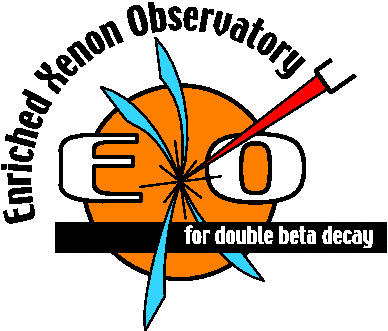Elementary Particle Physics at The University of Alabama
The University of Alabama Experimental Particle PhysicsExperimental Particle Physics at The University of Alabama consists of collider physics research with the CMS experiment at CERN, and a diverse group of neutrino projects.
There is a wide range of neutrino properties being studied by three groups at Alabama. These three groups are currently members of five different international collaborations. The main goal of three of these collaborations is to determine the difference in mass squares between neutrino types. By searching for neutrino oscillations they are able to observe this mass square difference by knowledge of the distance the detectors are from the source. Each of these experiments has a major goal, however, every physics project is capable of examining more than just one property or type of neutrinos. Some of the other physics being looked into by these experiments include: supernovae, neutron decay, neutrino magnetic moments, geo-neutrinos, negative muon capture, and much more. Research activities in the Collider Physics group at the University of Alabama are focused on the Compact Muon Solenoid (CMS) experiment at the Large Hadron Collider (LHC) in CERN, the European particle physics laboratory in Geneva, Switzerland. The CMS Collaboration is an international collaboration of over 2000 scientists who operate the Compact Muon Solenoid detector at the Large Hadron Collider in CERN. The LHC is colliding protons at the highest energies ever achieved in the laboratory, and it is hoped that these high-energy collisions will uncover the elusive Higgs boson, and perhaps reveal even more exotic new physics, such as supersymmetry or extra dimensions of space. For more information on the Alabama group's activities on CMS, visit the UA Collider Physics group webpage. KamLAND is a 1000 ton liquid scintillation detector in the Kamioka mine in Japan. KamLAND has been observing anti-neutrinos from the nuclear reactors in the Asian region to look for neutrino oscillation parameters. By knowing the power of each of the nuclear reactors in the region, the total flux of anti-neutrinos can be deduced. From this total flux KamLAND looks for a deficit in the number of electron anti-neutrinos that it sees. The KamLAND collaboration is also currently developing techniques to purify the liquid scintillator from radioisotopes to make it possible to see the 7Be solar neutrino. The purification techniques are being developed extensively at Alabama, CalTech, and Tohoku University. To see more details about the contributions to KamLAND from the UA group look into KamLAND at UA. KamLAND is currently looking at taking 7Be data in Dec 2006. MiniBoone is a 800 ton liquid scintillation detector at Fermi Lab, situated down-line from the 8 GeV proton accelerator. Here it converts protons into pions by colliding the protons into a beryllium target. The pions are unstable and decay into muon and muon neutrino pairs. The muons interact well with matter and can easily be stopped by a steel absorber. The neutrinos however have a very small cross section which allows nearly all of them to pass unhindered through the steel and into the detector. Here MiniBoone will look to observe the appearance of electron type neutrinos which oscillated from the muon neutrino. MiniBoone has a unique capability of observing both muon neutrinos and muon anti-neutrinos by focusing the positive and negative pions produced in the collision with the target by a large magnetic field. By changing the magnetic field they are able to focus the negative pions, which decay into negative muons and muon anti-neutrinos, toward the detector. MiniBoone is looking to uncover the possibility of a fourth non-interacting sterile neutrino by verification of the LSND measurement. EXO will use enriched liquid Xenon to search for the signature of neutrino-less double beta decay. If observed, this will uncover the Majorana neutrino as a fundamental particle. EXO is working on a 200 kg prototype detector that will be deployed at WIPP, and will start to take data in 2006. Double Chooz is a newly proposed project that is being developed to measure ϑ 13. It will use the site that is home to the former Chooz experiment in France. The measurement process will involve the correlation of events from a near and far liquid scintillation detector that will detect reactor anti-neutrino oscillations. Double Chooz is planning to be completed with construction so that data taking can start in 2008. ν - SNS will be situated at Oak Ridge National Laboratories at the Spallation Neutron Source (SNS) which is currently under construction. Once construction on the SNS is complete a neutrino detector will be placed here designed specifically to measure the neutrino-nucleus cross sections of importance to current neutrino physics and cosmology. The project will be complete in approximately three years after SNS is is completed and it is proposed that the first neutrino-nucleus cross section can be measured to within an accuracy of 10% within the first year of operation. The group headed by Dr. Jerry Busenitz currently focuses on analyzing the calibration data for the KamLAND detector and the design and certification of sources. The group consists of a Post-Doctoral Researcher and two Graduate Research Assistants. Dr. Busenitz is also working on the development of Double Chooz experiment. This work consists of performing low-background counting of material samples and Monte Carlo simulation of detector designs. The group headed by Dr. Ion Stancu is working on MiniBoone as the major project and consists of one Post-Doctoral Researcher who is working on site at FermiLab and two Graduate Research Assistants. Dr. Stancu is also working on the development of the Double Chooz and ν - SNS experiments. The group headed by Dr. Andreas Piepke is currently working on two major projects, KamLAND and EXO. The work for KamLAND consists of developing techniques to remove 85Kr, 210Pb, 210Po and 222Rn from the liquid scintillator and balloon surface. The main focus of work on KamLAND is to better understand the current low-background signal in KamLAND so a 7Be signal can be seen after a purification of the 1000 tons of liquid scintillator. Dr. Piepke's group also has the capabilities of performing ultra sensitive measurements of radio-isotopes by using neutron activation analysis. This is a method in which neutrons are used to excite the material's isotopes, which then subsequently decay, and the parent nuclei are detected in a low background germanium detector. By knowing the flux of neutrons from the reactor a measurement of radio-isotopic abundance is calculated. This capability is used to screen materials for use in KamLAND and EXO. Other detection capabilities consist of a second germanium detector for counting high activity samples, an alpha detector and a 212Bi - 212Po coincidence setup. The main work being performed for EXO is in screening materials for the development of the detector and in running Monte Carl simulations. The Monte Carlo is of specific detector designs and consists of determining what background would be seen given the measured material isotopic abundance and external (muon, rock, etc) backgrounds. The group consists of one Post-Doctoral Researcher and two Graduate Research Assistants. The group headed by Dr. Conor Henderson works on searches for beyond-Standard Model physics involving photon signatures with the CMS detector, and also on the operation of the CMS High-Level Trigger system. |







